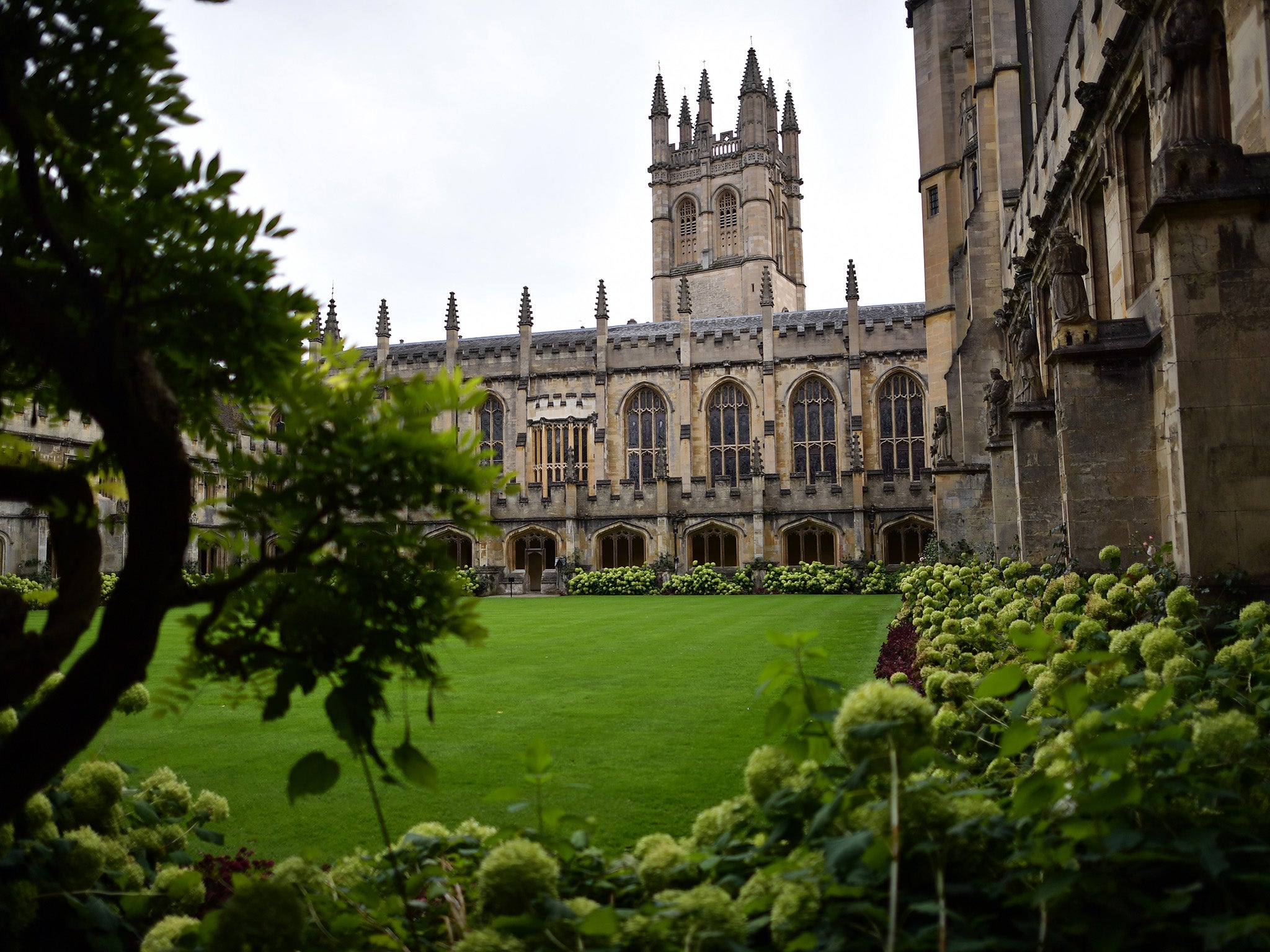Oxford University admits more women than men for first time in history
Data from Ucas shows institution offered places to 1,275 female 18-year-old applicants last year

Your support helps us to tell the story
From reproductive rights to climate change to Big Tech, The Independent is on the ground when the story is developing. Whether it's investigating the financials of Elon Musk's pro-Trump PAC or producing our latest documentary, 'The A Word', which shines a light on the American women fighting for reproductive rights, we know how important it is to parse out the facts from the messaging.
At such a critical moment in US history, we need reporters on the ground. Your donation allows us to keep sending journalists to speak to both sides of the story.
The Independent is trusted by Americans across the entire political spectrum. And unlike many other quality news outlets, we choose not to lock Americans out of our reporting and analysis with paywalls. We believe quality journalism should be available to everyone, paid for by those who can afford it.
Your support makes all the difference.Oxford University has offered more places to women than men for undergraduate courses for the first time in the history of the institution.
The university offered places to 1,275 female 18-year-old applicants and 1,165 to male applicants last year, according to data from the admissions service Ucas.
The figures show 1,070 women won undergraduate places to start at Oxford in September, compared to 1,025 men.
The data also shows of applicants of all ages from the UK, women received more offers to study as undergraduates than men, despite fewer applying.
Although the first women’s colleges were established in the 19th century, women were unable to become full members and graduate until 1920.
Five all-male colleges -Brasenose, Jesus College, Wadham, Hertford and St Catherine’s - first admitted women in 1974.
All colleges have admitted both men and women since 2008.
The data also showed a record number of students from the poorest background are entering top universities, but the wealthiest 18-year-olds are still nearly six times more likely to secure a place.
Applications from the most advantaged students were also at a record high last year.
Oxford University faced allegations of sexism last year after its history department announced it would allow students to sit exams from home in order to help close the gender gap.
The move, designed to boost results for female students who are statistically less likely to graduate with a first-class degree in the subject than their male peers, was criticised for implying women are the “weaker sex”.
Amanda Foreman, an honorary research senior fellow in history at the University of Liverpool, told The Telegraph: “The reason why girls and boys perform differently in exams has nothing to do with the building they are in.
“You are saying that the girls can’t take the stress of sitting in the exam room, which does raise one’s anxiety levels. I don’t think girls are inherently weaker than boys and can’t take it.”
Join our commenting forum
Join thought-provoking conversations, follow other Independent readers and see their replies
Comments